 At its meeting on 6 May, the Bank of England’s Monetary Policy Committee decided to keep Bank Rate at 0.1%. Due to the significant impact of COVID-19 and the measures put in place to try to contain the virus, the MPC voted unanimously to keep Bank Rate the same.
At its meeting on 6 May, the Bank of England’s Monetary Policy Committee decided to keep Bank Rate at 0.1%. Due to the significant impact of COVID-19 and the measures put in place to try to contain the virus, the MPC voted unanimously to keep Bank Rate the same.
However, it decided not to launch a new stimulus programme, with the committee voting by a majority of 7-2 for the Bank to continue with the current programme of quantitative easing. This involves the purchase of £200 billion of government and sterling non-financial investment-grade corporate bonds, bringing the total stock of bonds held by the Bank to £645 billion.
The Bank forecast that the crisis will put the economy into its deepest recession in 300 years, with output plunging 30 per cent in the first half of the year.
Monetary policy and MPC
Monetary policy is the tool used by the UK’s central bank to influence how much money is in the economy and how much it costs to borrow. The Bank of England’s main monetary policy tools include setting the Bank Rate and quantitative easing (QE). Bank Rate is the interest rate charged to banks when they borrow money from the BoE. QE is the process of creating money digitally to buy corporate and government bonds.
The BoE’s Monetary Policy Committee (MPC) sets monetary policy to meet the 2% inflation target. Maintaining a low and stable inflation rate is good for the economy and it is the main monetary policy aim. However, the Bank also has to balance this target with the government’s other economic aims of sustaining growth and employment in the economy.
Actions taken by the MPC
It is challenging to respond to severe economic and financial disruption, with the UK economy looking unusually uncertain. Activity has fallen sharply since the beginning of the year and unemployment has risen markedly. The current rate of inflation, measured by the Consumer Price Index (CPI), declined to 1.5% in March and is likely to fall below 1% in the next few months. Household consumption has fallen by around 30% as consumer confidence has declined. Companies’ sales are expected to be around 45% lower than normal and business investment 50% lower.
In the current circumstances, and consistent with the MPC’s remit, monetary policy is aimed at supporting businesses and households through the crisis and limiting any lasting damage to the economy. The Bank has used both main monetary tools to fulfil its mandate and attempt to boost the economy amid the current lockdown. The Bank Rate was reduced to 0.1% in March, the lowest level in the Bank’s 325-year history and the current programme of QE was introduced in March.
What is next?
This extraordinary time has seen the outlook for the all global economies become uncertain. 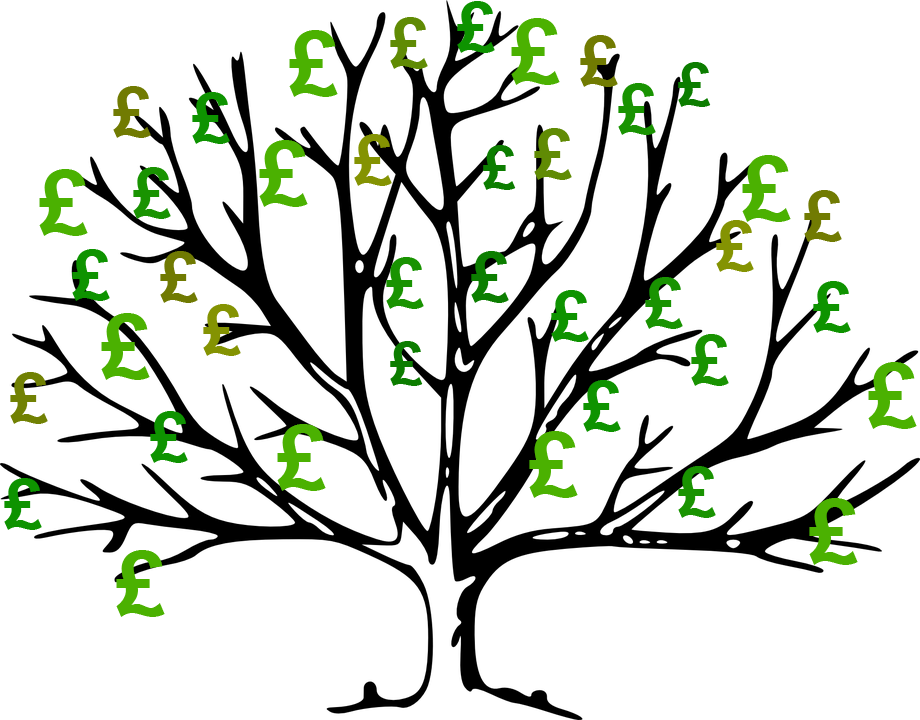 The long-term outcome will depend critically on the evolution of the pandemic, and how governments, households and businesses respond to it. The Bank of England has stated that businesses and households will need to borrow to get through this period and is encouraging banks and building societies to increase their lending. Britain’s banks are warned that if they try to stem losses by restricting lending, they will make the situation worse. The Bank believes that the banks are strong enough to keep lending, which will support the economy and limit losses to themselves.
The long-term outcome will depend critically on the evolution of the pandemic, and how governments, households and businesses respond to it. The Bank of England has stated that businesses and households will need to borrow to get through this period and is encouraging banks and building societies to increase their lending. Britain’s banks are warned that if they try to stem losses by restricting lending, they will make the situation worse. The Bank believes that the banks are strong enough to keep lending, which will support the economy and limit losses to themselves.
In the short term, a bleak picture of the UK economy is suggested, with a halving in business investment, a near halving in business sales, a sharp rise in unemployment and households cutting their spending by a third. Despite its forecast that GDP could shrink by 14% for 2020, the Bank of England is forecasting a ‘V’ shaped recovery. In this scenario, the recovery in economic activity, once measures are softened, is predicted to be relatively rapid and inflation rises to around the 2 per cent target. However, this would be after a dip to 0.5% in 2021, before returning to the 2 per cent target the following year.
However, there are some suggestions that the Bank’s forecast for the long-term recovery is too optimistic. Yael Selfin, chief economist at KPMG UK, fears the UK economy could shrink even more sharply than the Bank of England has forecast.
Despite the stark numbers issued by the Bank of England today, additional pressure on the economy is likely. Some social distancing measures are likely to remain in place until we have a vaccine or an effective treatment for the virus, with people also remaining reluctant to socialise and spend. That means recovery is unlikely to start in earnest before sometime next year.
 There are also additional factors that could dampen future productivity, such as the impact on supply chains, with ‘just-in-time’ operations potentially being a thing of the past.
There are also additional factors that could dampen future productivity, such as the impact on supply chains, with ‘just-in-time’ operations potentially being a thing of the past.
There is also the ongoing issue of Brexit. This is a significant downside risk as the probability of a smooth transition to a comprehensive free-trade agreement with the EU in January is relatively small. This will only increase uncertainty for businesses along with the prospect of increased trade frictions next year.
Conclusion
The predictions from the Bank of England are based on many assumptions, one of which is that the economy will only be gradually released from lockdown. Its numbers contain the expectations that consumer and worker behaviour will change significantly, and continue for some time, with forms of voluntary social distancing. On the other hand, Mr Bailey expects the recovery to be much faster than seen with the financial crisis a decade ago. However, again this is based on the assumption that measures put in place from the public health side prevent a second wave of the virus.
It also assumes that the supply-side effects on the economy will be limited in the long run. Many economists disagree, arguing that the ‘scarring effects’ of the lockdown may be substantial. These include lower rates of investment, innovation and start ups and the deskilling effects on labour. They also include the businesses that have gone bankrupt and the dampening effect on consumer and business confidence. Finally, with a large increase in lending to tide firms over the crisis, many will face problems of debt, which will dampen investment.
The Bank of England does recognise these possible scarring effects. Specifically, it warns of the danger of a rise in equilibrium unemployment:
It is possible that the rise in unemployment could prove more persistent than embodied in the scenario, for example if companies are reluctant to hire until they are sure about the robustness of the recovery in demand. It is also possible that any rise in unemployment could lead to an increase in the long‑term equilibrium rate of unemployment. That might happen if the skills of the unemployed do not increase to the same extent as they would if they were working, for example, or even erode over time.
What is certain, however, is that the long-term picture will only become clearer when we start to come out of the crisis. Bailey implied that the Bank is taking a wait-and-see approach for now, waiting on the UK government to shed some light about easing of lockdown measures before taking any further action with regards to QE. The MPC will continue to monitor the situation closely and, consistent with its remit, stands ready to take further action as necessary to support the economy and ensure a sustained return of inflation to the 2% target. Paul Dales, chief UK economist at Capital Economics, suggested that the central bank is signalling that ‘more QE is coming, if not in June, then in August’.
Articles
Bank of England publication
Questions
- How could the BoE use monetary policy to boost the economy?
- Explain how changes in interest rates affect aggregate demand.
- Define and explain quantitative easing (QE).
- How might QE help to stimulate economic growth?
- How is the pursuit of QE likely to affect the price of government bonds? Explain.
- Evaluate the extent to which monetary policy is able to stimulate the economy and achieve price stability.
 Senior Bank of England officials appeared before the House of Commons’ Treasury Select Committee on 21 February to report on the state of the economy and the future path for inflation and interest rates. One topic considered was the role of depreciation.
Senior Bank of England officials appeared before the House of Commons’ Treasury Select Committee on 21 February to report on the state of the economy and the future path for inflation and interest rates. One topic considered was the role of depreciation.
The pound has depreciated since the referendum on EU membership in June 2016. The exchange rate index today is some 9% below that before the referendum and 15% below the peak a year before the referendum.
It had fallen as much as 14% by October 2016 below the level before the referendum and 20% below its peak, pushed down partly by the cut in Bank Rate from 0.5% to 0.25% following the referendum. In November 2017, the Bank’s Monetary Policy Committee raised Bank Rate back to 0.5%. Two or three more rises of 25 basis points are expected over the next couple of years. This has helped to strengthen sterling somewhat. (Click here for a PowerPoint of the chart below.)
But has the depreciation been advantageous or disadvantageous to the economy? Here the Governor (Mark Carney) and the Chief Economist (Andy Haldane) appeared to differ. Andy Haldane said:
A combination of the weaker pound and a stronger global economy has worked its magic. That has meant that net trade has been a significant contributor, and we expect those effects to continue over the next two or three years. … Depreciations work, and that’s how they work.
By contrast, Mark Carney said:
Depreciations don’t work. They have an economic effect, but they’re not a good economic strategy. They may be an outcome of various things … but it’s how you make yourself poorer.
Are these statements contradictory or are they simply emphasising different effects of depreciation?
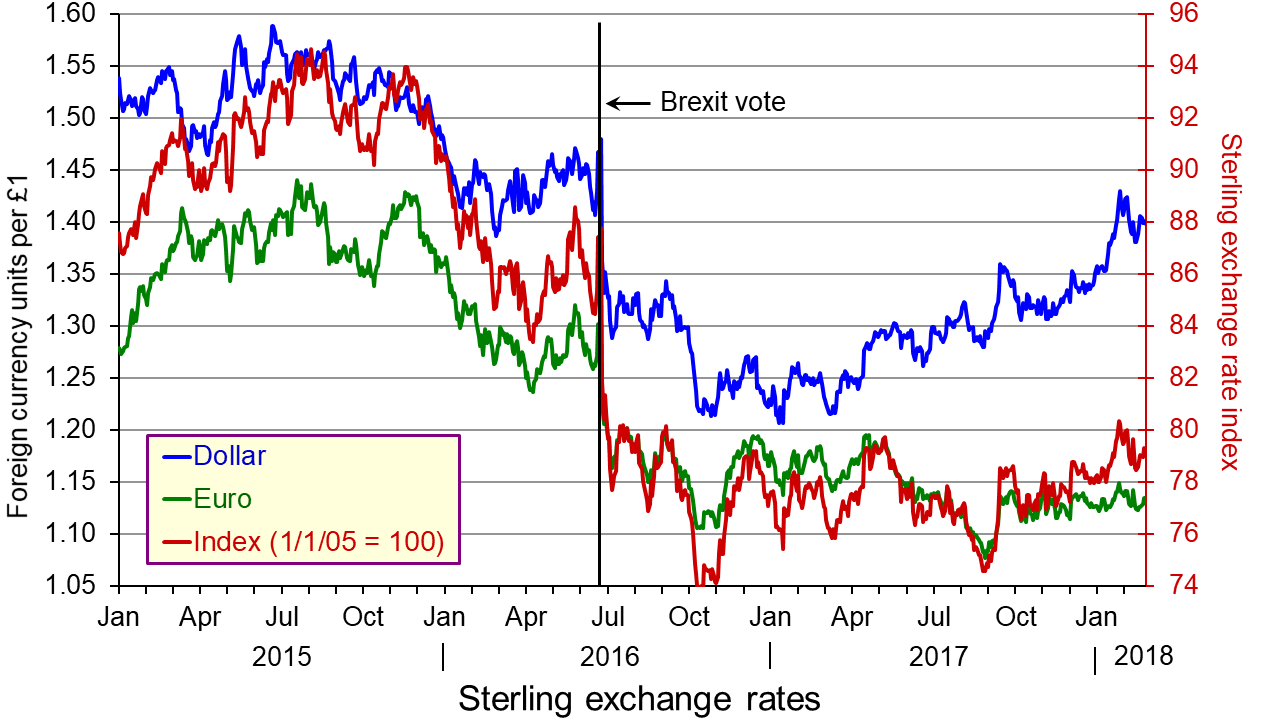
Both Andy Haldane and Mark Carney would accept that a depreciation makes imports more expensive and thus reduces real incomes (at least in the short run). They would also accept that a depreciation makes exports priced in pounds cheaper in foreign currency terms and thus can boost the demand for exports.
There is disagreement over two things, however. The first is the effect on people’s real incomes in the long run. Will any fall in real incomes from higher-priced imports in the short run be offset in the long run by higher economic growth?
This relates to a second area of disagreement. This is whether a depreciation can act as a significant driver for exports over the longer term. The increased incentive on the demand side (from consumers abroad to buy UK exports) could be offset by a disincentive for exporters to become more efficient and/or to compete in terms of quality. In other words, although it can give exporters a price advantage, the crucial question is the extent to which they take advantage of this, or merely take higher profits.
The disagreements thus relate primarily to the incentive effects over the longer term.
Articles
Bank of England governor says Brexit has made us poorer – as it happened The Guardian, Graeme Wearden (21/2/18)
Brexit will knock 5% off wage growth, says Mark Carney The Guardian, Phillip Inman (21/2/18)
Video
 Treasury Committee: Wednesday 21 February 2018 Parliamentlive.tv (21/2/18) (see from 16:08:00)
Treasury Committee: Wednesday 21 February 2018 Parliamentlive.tv (21/2/18) (see from 16:08:00)
Bank of England documents
Treasury Select Committee hearing on the February 2018 Inflation Report Bank of England (21/2/18)
Inflation Report – February 2018 Bank of England (8/2/18)
Data
Interest & exchange rates data Bank of England
Questions
- How does a depreciation affect the demand for and supply of imports and exports?
- What determines the size of the effect on inflation of a depreciation?
- What is the significance of the price elasticity of demand for and supply of sterling in determining the size of depreciation resulting from a change in confidence or a change in interest rates?
- How does productivity growth impact on the effectiveness of a depreciation in leading to higher economic growth?
- In what ways might a depreciation affect productivity growth?
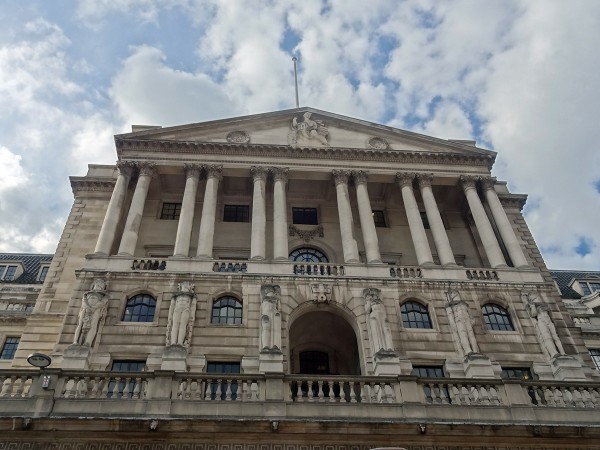 On 2 November, the Bank of England raised Bank rate from 0.25% to 0.5% – the first rise since July 2007. But was now the right time to raise interest rates? Seven of the nine-person Monetary Policy Committee voted to do so; two voted to keep Bank Rate at 0.25%.
On 2 November, the Bank of England raised Bank rate from 0.25% to 0.5% – the first rise since July 2007. But was now the right time to raise interest rates? Seven of the nine-person Monetary Policy Committee voted to do so; two voted to keep Bank Rate at 0.25%.
Raising the rate, on first sight, may seem a surprising decision as growth remains sluggish. Indeed, the two MPC members who voted against the rise argued that wage growth was too weak to justify the rise. Also, inflation is likely to fall as the effects of the Brexit-vote-induced depreciation of sterling on prices feeds through the economy. In other words, prices are likely to settle at the new higher levels but will not carry on rising – at least not at the same rate.
So why did the other seven members vote to raise Bank Rate. There are three main arguments:
|
|
| • |
Inflation, at 3%, is above the target of 2% and is likely to stay above the target if interest rates are not raised. |
| • |
There is little spare capacity in the economy, with low unemployment. There is no shortage of aggregate demand relative to output. |
| • |
With productivity growth being negligible and persistently below that before the financial crisis, aggregate demand, although growing slower than in the past, is growing excessively relative to the growth in aggregate supply. |
As the Governor stated at the press conference:
In many respects, the decision today is straightforward: with inflation high, slack disappearing, and the economy growing at rates above its speed limit, inflation is unlikely to return to the 2% target without some increase in interest rates.
But, of course, the MPC’s forecasts may turn out to be incorrect. Many things are hard to predict. These include: the outcomes of the Brexit negotiations; consumer and business confidence and their effects on consumption and investment; levels of growth in other countries and their effects on UK exports; and the effects of the higher interest rates on saving and borrowing and hence on aggregate demand.
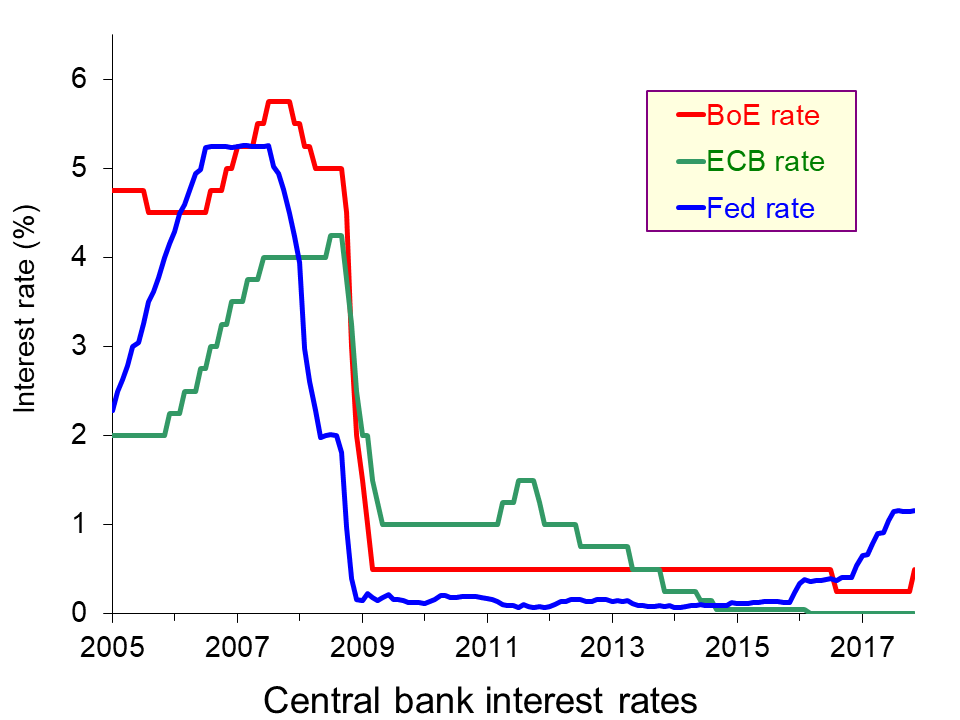 The Bank of England is well aware of these uncertainties. Although it plans two more rises in the coming months and then Bank Rate remaining at 1% for some time, this is based on its current assessment of the outlook for the economy. If circumstances change, the Bank will adjust the timing and total amount of future interest rate changes.
The Bank of England is well aware of these uncertainties. Although it plans two more rises in the coming months and then Bank Rate remaining at 1% for some time, this is based on its current assessment of the outlook for the economy. If circumstances change, the Bank will adjust the timing and total amount of future interest rate changes.
There are, however, dangers in the rise in interest rates. Household debt is at very high levels and, although the cost of servicing these debts is relatively low, even a rise in interest rates of just 0.25 percentage points can represent a large percentage increase. For example, a rise in a typical variable mortgage interest rate from 4.25% to 4.5% represents a 5.9% increase. Any resulting decline in consumer spending could dent business confidence and reduce investment.
Nevertheless, the Bank estimates that the effect of higher mortgage rates is likely to be small, given that some 60% of mortgages are at fixed rates. However, people need to refinance such rates every two or three years and may also worry about the rises to come promised by the Bank.
Articles
Bank of England deputy says interest rate rise means pain for households and more hikes could be in store Independent, Ben Chapman (3/11/17)
UK interest rates: Bank of England shrugs off Brexit nerves to launch first hike in over a decade Independent, Ben Chu (2/11/17)
 Bank of England takes slow lane after first rate hike since Reuters, David Milliken, William Schomberg and Julian Satterthwaite (2/11/17)
Bank of England takes slow lane after first rate hike since Reuters, David Milliken, William Schomberg and Julian Satterthwaite (2/11/17)
First UK rate rise in a decade will be a slow burn Financial Times, Gemma Tetlow (2/11/17)
The Bank of England’s Rate Rise Could Spook Britain’s Economy Bloomberg, Fergal O’Brien and Brian Swint (3/11/17)
 Bank of England hikes rates for the first time in a decade CNBC, Sam Meredith (2/11/17)
Bank of England hikes rates for the first time in a decade CNBC, Sam Meredith (2/11/17)
Interest rates rise in Britain for the first time in a decade The Economist (2/11/17)
Bank of England publications
 Bank of England Inflation Report Press Conference, Opening Remarks Financial Times on YouTube, Mark Carney (2/11/17)
Bank of England Inflation Report Press Conference, Opening Remarks Financial Times on YouTube, Mark Carney (2/11/17)
Bank of England Inflation Report Press Conference, Opening Remarks Bank of England, Mark Carney (2/11/17)
 Inflation Report Press Conference (full) Bank of England on YouTube (2/11/17)
Inflation Report Press Conference (full) Bank of England on YouTube (2/11/17)
Inflation Report Bank of England (November 2017)
Monetary Policy Summary and minutes of the Monetary Policy Committee meeting ending on 1 November 2017 Bank of England (2/11/17)
Questions
- Why did the majority of MPC members feel that now was the right time to raise interest rates whereas a month ago was the wrong time?
- Why did the exchange rate fall when the announcement was made?
- How does a monetary policy of targeting the rate of inflation affect the balance between aggregate demand and aggregate supply?
- Can monetary policy affect potential output, or only actual output?
- If recent forecasts have downgraded productivity growth and hence long-term economic growth, does this support the argument for raising interest rates or does it suggest that monetary policy should be more expansionary?
- Why does the MPC effectively target inflation in the future (typically in 24 months’ time) rather than inflation today? Note that Mark Carney at the press conference said, “… it isn’t so much where inflation is now, but where it’s going that concerns us.”
- To what extent can the Bank of England’s monetary policy be described as ‘discretionary’?
 On the 15th June, the Bank of England’s Monetary Policy Committee decided to keep Bank Rate on hold at its record low of 0.25%. This was not a surprise – it was what commentators had expected. What was surprising, however, was the split in the MPC. Three of its current eight members voted to raise the rate.
On the 15th June, the Bank of England’s Monetary Policy Committee decided to keep Bank Rate on hold at its record low of 0.25%. This was not a surprise – it was what commentators had expected. What was surprising, however, was the split in the MPC. Three of its current eight members voted to raise the rate.
At first sight, raising the rate might seem the obvious thing to do. CPI inflation is currently 2.9% – up from 2.7% in April and well above the target of 2% – and is forecast to go higher later this year. According to the Bank of England’s own forecasts, even at the 24-month horizon inflation is still likely to be a little above the 2% target.
Those who voted for an increase of 0.25 percentage points to 0.5% saw it as modest, signalling only a very gradual return to more ‘normal’ interest rates. However, the five who voted to keep the rate at 0.25% felt that it could dampen demand too much.
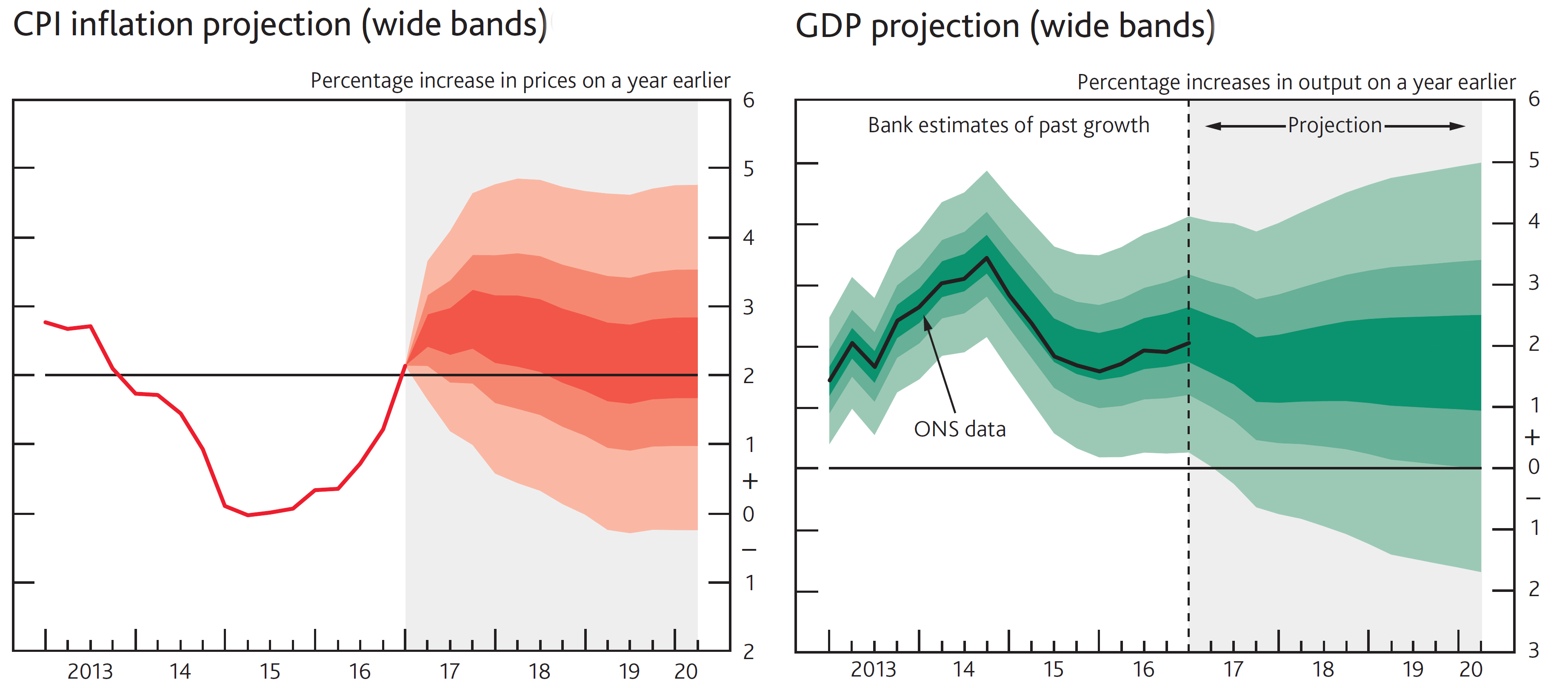
The key argument is that inflation is not of the demand-pull variety. Aggregate demand is subdued. Real wages are falling and hence consumer demand is likely to fall too. Thus many firms are cautious about investing, especially given the considerable uncertainties surrounding the nature of Brexit. The prime cause of the rise in inflation is the fall in sterling since the Brexit vote and the effect of higher import costs feeding through into retail prices. In other words, the inflation is of the cost-push variety. In such cirsumstances dampening demand further by raising interest rates would be seen by most economists as the wrong response. As the minutes of the MPC meeting state:
Attempting to offset fully the effect of weaker sterling on inflation would be achievable only at the cost of higher unemployment and, in all likelihood, even weaker income growth. For this reason, the MPC’s remit specifies that, in such exceptional circumstances, the Committee must balance any trade-off between the speed at which it intends to return inflation sustainably to the target and the support that monetary policy provides to jobs and activity.
The MPC recognises that the outlook is uncertain. It states that it stands ready to respond to circumstances as they change. If demand proves to be more resilient that it currently expects, it will raise Bank Rate. If not, it is likely to keep it on hold to continue providing a modest stimulus to the economy. However, it is unlikely to engage in further quantitative easing unless the economic outlook deteriorates markedly.
Articles
The Bank of England is moving closer to killing the most boring chart in UK finance right now Business Insider, Will Martin (16/6/17)
UK inflation hits four-year high of 2.9% Financial Times, Gavin Jackson and Chloe Cornish (13/6/17)
Surprise for markets as trio of Bank of England gurus call for interest rates to rise The Telegraph, Szu Ping Chan Tim Wallace (15/6/17)
Bank of England rate setters show worries over rising inflation Financial TImes, Chris Giles (15/6/17)
Three Bank of England policymakers in shock vote for interest rate rise Independent, Ben Chu (15/6/17)
Bank of England edges closer to increasing UK interest rates The Guardian, Katie Allen (15/6/17)
Bank of England doves right to thwart hawks seeking interest rate rise The Guardian, Larry Elliott (15/6/17)
Haldane expects to vote for rate rise this year BBC News (21/6/17)
Bank of England documents
Monetary policy summary Bank of England (15/6/17)
Monetary Policy Summary and minutes of the Monetary Policy Committee meeting ending on 14 June 2017 Bank of England (15/6/17)
Inflation Report, May 2017 Bank of England (11/5/16)
Questions
- What is the mechanism whereby a change in Bank Rate affects other interest artes?
- Use an aggregate demand and supply diagram to illustrate the difference between demand-pull and cost-push inflation.
- If the exchange rate remains at around 10–15% below the level before the Brexit vote, will inflation continue to remain above the Bank of England’s target, or will it reach a peak relatively soon and then fall back? Explain.
- For what reason might aggregate demand prove more buoyant that the MPC predicts?
- Would a rise in Bank Rate from 0.25% to 0.5% have a significant effect on aggregate demand? What role could expectations play in determining the nature and size of the effect?
- Why are real wage rates falling at a time when unemployment is historically very low?
- What determines the amount that higher prices paid by importers of products are passed on to consumers?
 With the effects of the depreciation of sterling feeding through into higher prices, so the rate of inflation has risen. The latest figures from the ONS show that in the year to April 2017, CPI inflation was 2.7% – up from 2.3% in the year to March. The largest contributors to higher prices were transport costs and housing and household services.
With the effects of the depreciation of sterling feeding through into higher prices, so the rate of inflation has risen. The latest figures from the ONS show that in the year to April 2017, CPI inflation was 2.7% – up from 2.3% in the year to March. The largest contributors to higher prices were transport costs and housing and household services.
But wage increases are not keeping up with price increases. In 2017 Q1, the average annual growth rate in regular pay (i.e. excluding bonuses) was 2.1%. In other words, real pay is falling. And this is despite the fact that the unemployment rate, at 4.6%, is the lowest since 1975.
The fall in real wages is likely to act as a brake on consumption and the resulting dampening of aggregate demand could result in lower economic growth. On the other hand, the more buoyant world economy, plus the lower sterling exchange rate is helping to boost exports and investment and this could go some way to offsetting the effects on consumption. As Mark Carney stated in his introductory remarks to the May 2017 Bank of England Inflation Report:
The combination of the stronger global outlook and sterling’s past depreciation is likely to support UK net trade. And together with somewhat lower uncertainty, stronger global growth is also likely to encourage investment as exporters renew and increase capacity.
According to the Bank of England, the net effect will be modest economic growth, despite the fall in real wages.
In the MPC’s central forecast, quarterly growth is forecast to stabilise around its current rate, resulting in growth of 1.9% in 2017 and around 1¾% in each of the next two years.
 But forecasting is dependent on a range of assumptions, not least of which are assumptions about consumer and business expectations. These, in turn, depend on a whole range of factors, such as the outcome of the UK election, the Brexit negotiations, commodity prices, world growth rates and international events, such as the actions of Donald Trump. Because of the uncertainty surrounding forecasts, the Bank of England uses fan charts. In the two fan charts illustrated below (from the May 2017 Inflation Report), the bands on constructed on the following assumptions:
But forecasting is dependent on a range of assumptions, not least of which are assumptions about consumer and business expectations. These, in turn, depend on a whole range of factors, such as the outcome of the UK election, the Brexit negotiations, commodity prices, world growth rates and international events, such as the actions of Donald Trump. Because of the uncertainty surrounding forecasts, the Bank of England uses fan charts. In the two fan charts illustrated below (from the May 2017 Inflation Report), the bands on constructed on the following assumptions:
If economic circumstances identical to today’s were to prevail on 100 occasions, the MPC’s best collective judgement is that CPI inflation or the mature estimate of GDP growth would lie within the darkest central band on only 30 of those occasions and within each pair of the lighter coloured areas on 30 occasions.

The charts and tables showing the May 2017 projections have been conditioned on the assumptions that the stock of purchased gilts remains at £435 billion and the stock of purchased corporate bonds remains at £10 billion throughout the forecast period, and on the Term Funding Scheme (TFS); all three of which are financed by the issuance of central bank reserves. They have also been conditioned on market interest rates, unless otherwise stated.
The wider the fan, the greater the degree of uncertainty. These fan charts are wide by historical standards, reflecting the particularly uncertain future for the UK economy.
But one thing is clear from the latest data: real incomes are falling. This is likely to dampen consumer spending, but just how much this will impact on aggregate demand over the coming months remains to be seen.
Articles
UK real wages drop for first time in three years Financial Times, Sarah O’Connor (17/5/17)
Bank of England warns Brexit vote will damage living standards The Guardian, Katie Allen (11/5/17)
UK wage growth lags inflation for first time since mid-2014 BBC News (17/5/17)
Britons’ Falling Real Wages Show Challenging Times Have Arrived Bloomberg, Scott Hamilton and Lucy Meakin (17/5/17)
Jobs market will suffer a Brexit slowdown, say experts The Guardian, Angela Monaghan and Phillip Inman (15/5/17)
Pay will continue to be squeezed, employers’ survey suggests BBC News, Kamal Ahmed (15/5/17)
Brexit latest: Real wages falling, Office for National Statistics reveals Independent, Ben Chu (17/5/17)
UK inflation climbs to four-year high, beating forecasts Financial Times, Gavin Jackson (16/5/17)
Why is UK inflation at a four-year high? Financial Times, Gavin Jackson (19/5/17)
A blip, or a test of hawks’ patience? Economists respond to high UK inflation data Financial Times, Nicholas Megaw (16/5/17)
UK inflation rate at highest level since September 2013 BBC News (16/5/17)
Inflation jumps to its highest level since 2013 as Brexit continues to bite Business Insider, Will Martin (16/5/17)
UK GDP growth weaker than expected as inflation hits spending The Guardian, Katie Allen (25/5/17)
UK economic growth estimate revised down BBC News (25/5/17)
Reports
Inflation Report, May 2017 Bank of England (11/5/17)
Labour Market Outlook, Sping 2017 Chartered Institute of Personnel and Development (May 2017)
Data
Statistical Interactive Database – interest & exchange rates data Bank of England
Inflation and price indices ONS
Earnings and working hours ONS
Second estimate of GDP: Jan to Mar 2017 ONS Statistical Bulletin (25/5/17)
Questions
- Find out what has happened to the dollar/sterling and the euro/sterling exchange rate and the sterling exchange rate index over the past 24 months. Plot the data on a graph.
- Explain the changes in these exchange rates.
- Why is there negative real wage growth in the UK when the rate of unemployment is the lowest it’s been for more than 40 years?
- Find out what proportion of aggregate demand is accounted for by household consumption. Why is this significant in understanding the likely drivers of economic growth over the coming months?
- Why is uncertainty over future UK growth rates relatively high at present?
- Why is inflation likely to peak later this year and then fall?
- What determines the size and shape of the fan in a fan chart?
 At its meeting on 6 May, the Bank of England’s Monetary Policy Committee decided to keep Bank Rate at 0.1%. Due to the significant impact of COVID-19 and the measures put in place to try to contain the virus, the MPC voted unanimously to keep Bank Rate the same.
At its meeting on 6 May, the Bank of England’s Monetary Policy Committee decided to keep Bank Rate at 0.1%. Due to the significant impact of COVID-19 and the measures put in place to try to contain the virus, the MPC voted unanimously to keep Bank Rate the same.  The long-term outcome will depend critically on the evolution of the pandemic, and how governments, households and businesses respond to it. The Bank of England has stated that businesses and households will need to borrow to get through this period and is encouraging banks and building societies to increase their lending. Britain’s banks are warned that if they try to stem losses by restricting lending, they will make the situation worse. The Bank believes that the banks are strong enough to keep lending, which will support the economy and limit losses to themselves.
The long-term outcome will depend critically on the evolution of the pandemic, and how governments, households and businesses respond to it. The Bank of England has stated that businesses and households will need to borrow to get through this period and is encouraging banks and building societies to increase their lending. Britain’s banks are warned that if they try to stem losses by restricting lending, they will make the situation worse. The Bank believes that the banks are strong enough to keep lending, which will support the economy and limit losses to themselves. There are also additional factors that could dampen future productivity, such as the impact on supply chains, with ‘just-in-time’ operations potentially being a thing of the past.
There are also additional factors that could dampen future productivity, such as the impact on supply chains, with ‘just-in-time’ operations potentially being a thing of the past.







